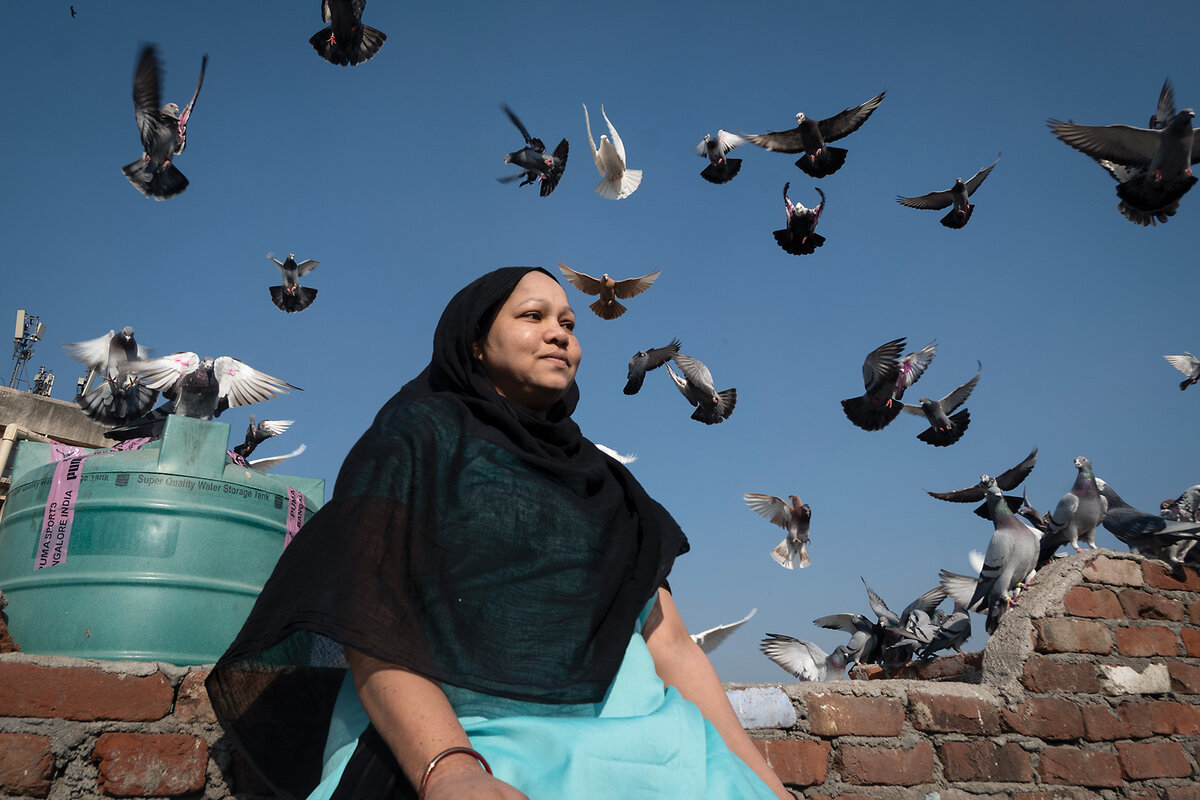To pigeon-keepers in Delhi, feathered friends are also family
Loading...
| Delhi
When Mohammad Sameer was in his teens, he aspired to have a terrace so that he could be with his favorite creatures – pigeons.
That dream was fulfilled soon after his father bought an apartment on a crammed street near Jama Masjid, a historic mosque in Old Delhi, Delhi’s historic heart. Hundreds of pigeon lovers spend time on terraces there feeding and flying the birds.
Mr. Sameer is part of a community of pigeon-keepers in Old Delhi that, for centuries, has been raising pigeons. The birds “are like my family, and spending time with them gives me utmost happiness,” he says, gesturing and whistling at the birds as they fly high above him. He learned pigeon-keeping from a master who has instructed hundreds of enthusiasts on how to train the birds to fly back to their home lofts from a designated release point.
Why We Wrote This
For centuries, pigeon-keepers in Delhi have tended to their flocks. This community has formed surprisingly tight bonds with the birds.
In Delhi, the birds were domesticated in the 17th century by Muslim rulers, who used them for communication, historian Sohail Hashmi notes. Modern pigeon-keepers today “form enduring bonds,” he says.
Mohammad Farman agrees. He recounts that on one December day, when Delhi witnessed rains after days of pollution, his feathered companions didn’t return at their usual time. It worried him greatly. “I did not have meals that day,” he says.
But then Mr. Farman realized that the birds were just enjoying the clear skies after the showers.
For more visual storytelling that captures communities, traditions, and cultures around the globe, visit The World in Pictures.










